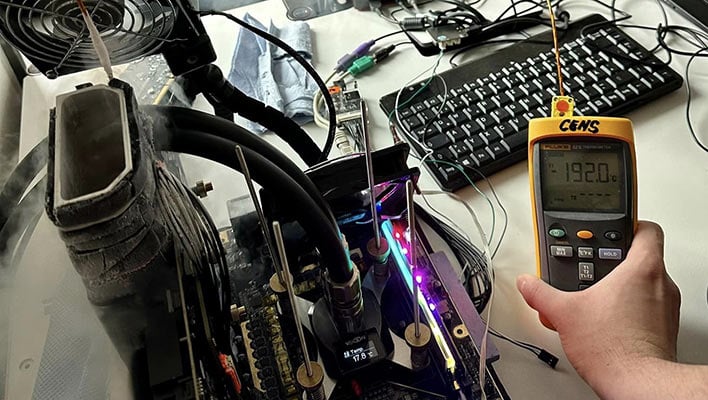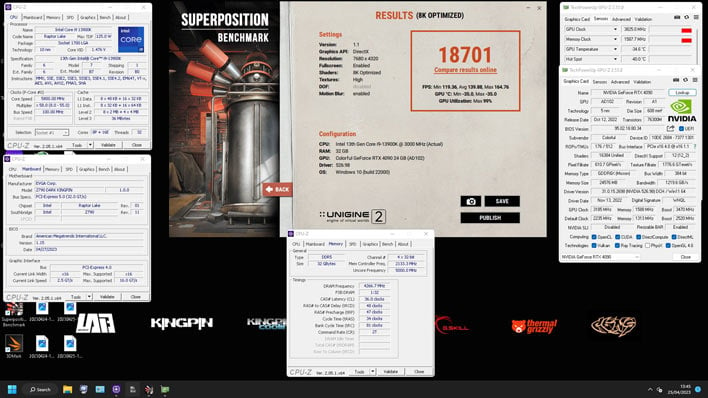GeForce RTX 4090 Breaks The 3.8GHz Barrier In Taxing 3D Test For The First Time Ever

An NVIDIA GeForce RTX 4090 pushed beyond 3.8GHz has achieved the top place on the Unigine Superposition 8K leaderboard. Unigine Superposition is an advanced modern 3D benchmark, which uses many features seen in today's AAA games, so this achievement means the 3.83GHz overclock of the RTX 4090 was also pretty stable. NVIDIA's official reference base / boost clocks for the powerful RTX 4090 are 2.23 / 2.52GHz respectively.
Overclocker CENS described the overclocking and Superposition testing feat as the "first to break the 3800MHz barrier in 3D." Putting the claim into some context, VideoCardz noted that the RTX 4090 had been pushed to over 3.8GHz back in November but was only used in a comparatively simple Pi calculation test. Superposition is a much wider system test which stresses a wide gamut of GPU features, as well as supporting performance components.
CENS used the highest 8K optimized profile for the Unigine Superposition testing, and his overall score of 18701 puts him firmly in the lead on the official leaderboard. Second placed overclocker OGS used a very similar system configuration, but 'only' achieved a score of 18145 with the GPU running at 3.66GHz. In third place, well known overclocker Rauf achieved a Superposition score of 17896, using the RTX 4090 clocked at 3.45GHz.
CENS provided some extra details and screenshots showcasing his setup in his linked Twitter post. One of the most important pieces of supplementary kit used was custom liquid nitrogen cooling apparatus, chilling the GPU down as low as -192°C. Therefore, this isn't a GPU clock many will aim to overclock towards at home using standard air or liquid cooling.


